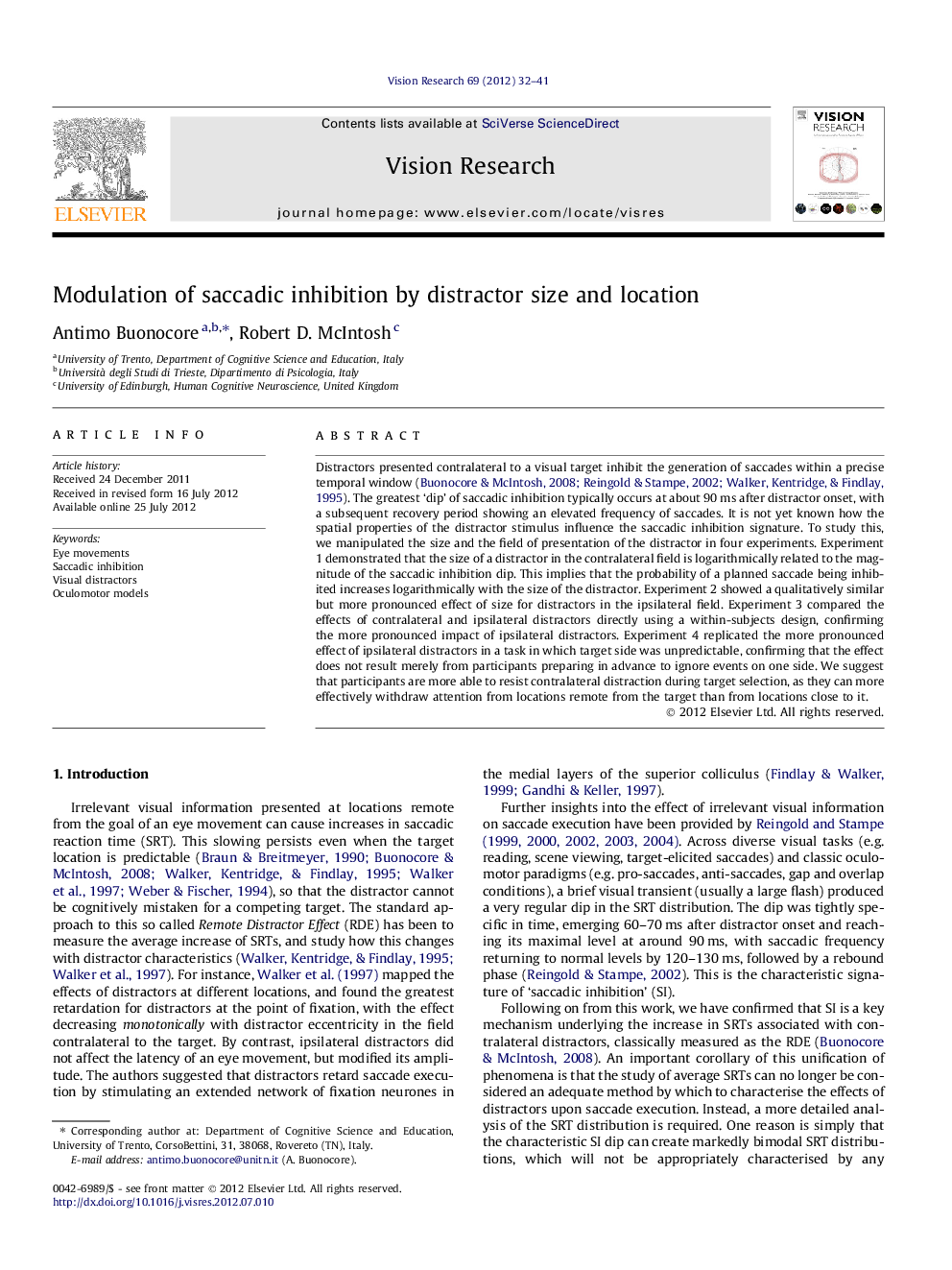| Article ID | Journal | Published Year | Pages | File Type |
|---|---|---|---|---|
| 6203670 | Vision Research | 2012 | 10 Pages |
Distractors presented contralateral to a visual target inhibit the generation of saccades within a precise temporal window (Buonocore & McIntosh, 2008; Reingold & Stampe, 2002; Walker, Kentridge, & Findlay, 1995). The greatest 'dip' of saccadic inhibition typically occurs at about 90Â ms after distractor onset, with a subsequent recovery period showing an elevated frequency of saccades. It is not yet known how the spatial properties of the distractor stimulus influence the saccadic inhibition signature. To study this, we manipulated the size and the field of presentation of the distractor in four experiments. Experiment 1 demonstrated that the size of a distractor in the contralateral field is logarithmically related to the magnitude of the saccadic inhibition dip. This implies that the probability of a planned saccade being inhibited increases logarithmically with the size of the distractor. Experiment 2 showed a qualitatively similar but more pronounced effect of size for distractors in the ipsilateral field. Experiment 3 compared the effects of contralateral and ipsilateral distractors directly using a within-subjects design, confirming the more pronounced impact of ipsilateral distractors. Experiment 4 replicated the more pronounced effect of ipsilateral distractors in a task in which target side was unpredictable, confirming that the effect does not result merely from participants preparing in advance to ignore events on one side. We suggest that participants are more able to resist contralateral distraction during target selection, as they can more effectively withdraw attention from locations remote from the target than from locations close to it.
⺠Probability of saccadic inhibition increases logarithmically with distractor size. ⺠Near (ipsilateral) distractors are more distracting than far (contralateral) ones. ⺠Top down allocation of attention may modulate the strength of inhibition.
